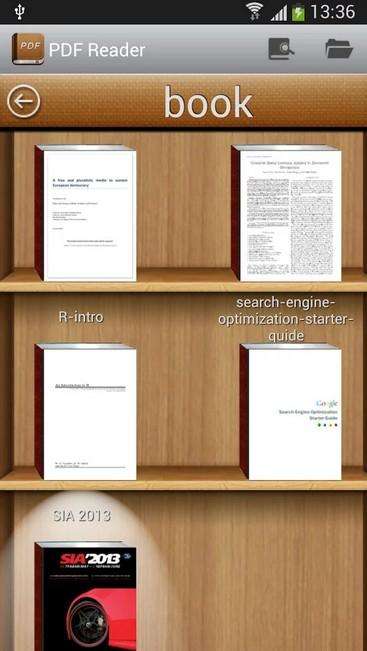

It was easy being green back in the Gingerbread days. Black and green seeped all over the UI as Android started its slow march toward distinctive design. Bright green had long been the color of Android's robot mascot, and with Gingerbread, it became an integral part of the operating system's appearance. Android version 2.3: GingerbreadĪndroid's first true visual identity started coming into focus with 2010's Gingerbread release.
#Best pdf reader for android honeycomb full
But back when it was still everywhere, being able to access the full web without any black holes was a genuine advantage only Android could offer. Apple would eventually win, of course, and Flash would become far less common. Notably, Froyo also brought support for Flash to Android's web browser - an option that was significant both because of the widespread use of Flash at the time and because of Apple's adamant stance against supporting it on its own mobile devices.

Google's first real attempt at voice control, in Froyo. Just four months after Android 2.1 arrived, Google served up Android 2.2, Froyo, which revolved largely around under-the-hood performance improvements.įroyo did deliver some important front-facing features, though, including the addition of the now-standard dock at the bottom of the home screen as well as the first incarnation of Voice Actions, which allowed you to perform basic functions like getting directions and making notes by tapping an icon and then speaking a command. The first versions of turn-by-turn navigation and speech-to-text, in Eclair. And it made waves for injecting the once-iOS-exclusive pinch-to-zoom capability into Android - a move often seen as the spark that ignited Apple's long-lasting "thermonuclear war" against Google. Navigation aside, Eclair brought live wallpapers to Android as well as the platform's first speech-to-text function. The release's most transformative element was the addition of voice-guided turn-by-turn navigation and real-time traffic info - something previously unheard of (and still essentially unmatched) in the smartphone world. Eclair was the first Android release to enter mainstream consciousness thanks to the original Motorola Droid phone and the massive Verizon-led marketing campaign surrounding it. Keeping up the breakneck release pace of Android's early years, Android 2.0, Eclair, emerged just six weeks after Donut its "point-one" update, also called Eclair, came out a couple months later. GoogleĪndroid's universal search box made its first appearance in Android 1.6. It also added support for CDMA networks like Verizon, which would play a key role in Android's imminent explosion. Donut filled in some important holes in Android's center, including the ability for the OS to operate on a variety of different screen sizes and resolutions - a factor that'd be critical in the years to come. Android version 1.6: DonutĪndroid 1.6, Donut, rolled into the world in the fall of 2009. Android Police (CC BY-SA 4.0)Ĭupcake was all about the widgets. Cupcake introduced numerous refinements to the Android interface, including the first on-screen keyboard - something that'd be necessary as phones moved away from the once-ubiquitous physical keyboard model.Ĭupcake also brought about the framework for third-party app widgets, which would quickly turn into one of Android's most distinguishing elements, and it provided the platform's first-ever option for video recording. With early 2009's Android 1.5 Cupcake release, the tradition of Android version names was born. The Android 1.0 home screen and its rudimentary web browser (not yet called Chrome).
#Best pdf reader for android honeycomb software
Things were pretty basic back then, but the software did include a suite of early Google apps like Gmail, Maps, Calendar, and YouTube, all of which were integrated into the operating system - a stark contrast to the more easily updatable standalone-app model employed today. Android versions 1.0 to 1.1: The early daysĪndroid made its official public debut in 2008 with Android 1.0 - a release so ancient it didn't even have a cute codename.


 0 kommentar(er)
0 kommentar(er)
